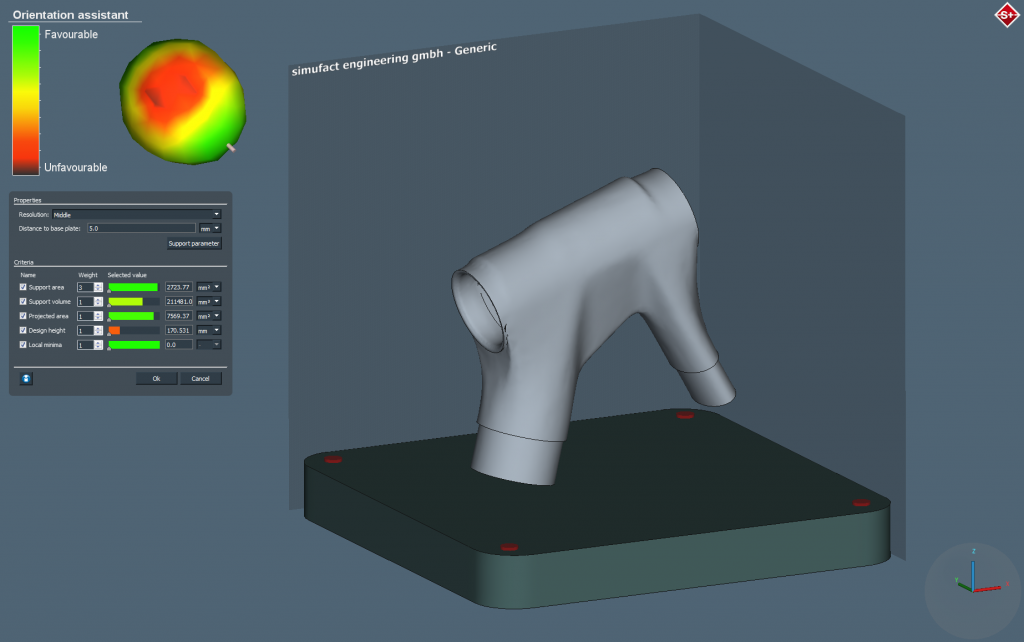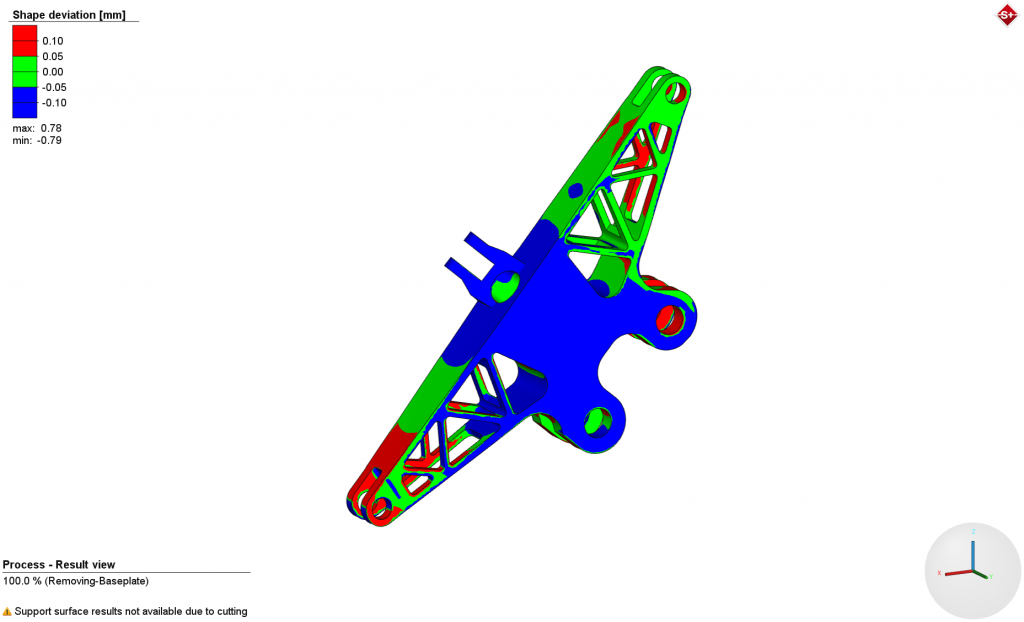Weather forecasting has brought immense benefits to society, both in terms of economic value and public safety. The output of such predictive algorithms can be used to inform decision making by diverse groups such as farmers, airlines and those responsible for public safety.
In some ways, the substantial number of variables required to forecast the weather is comparable to the conditions and factors determining the quality of a metal additive manufactured component.
During the printing process the build chamber of a metal 3D printing system is subjected to bursts of intense energy during complex process taking place at high temperatures. Build chamber metrology is an engineering puzzle that still remains to be fully solved. With this objective in mind national laboratories and other science institutes are applying a range of tools including physics based models and advanced image capturing systems to better understand the AM process chain.
Leading AM software companies address simulation for metal AM
A collaboration between two of the leading software companies working in the AM sector was initially announced at formnext 2017. This week at the TCT show, further details of how Materialise and Simufact plan to improve productivity and efficiency for metal AM have been released.
Users of the Materialise Magics 3D Print Suite will now have access to a new simulation module, which is an OEM version Simufact Additive Solver.
“As more companies adopt 3D Printing as an alternative manufacturing technology, service bureaus are operating in a more cost-competitive environment than ever. As a result, they are looking for ways to scale their operations, increase productivity and reduce overall costs”, said Stefaan Motte, Vice President and General Manager of the Materialise software division. “Software, and especially simulation software, will help drive down the primary cost. Our software suite will enable greater access to simulation capabilities and help increase productivity and efficiency.”
The metal additive manufacturing process contains many variables, and it is a frequent observation that upon acquiring a new system a bedding in period of dialling in settings is required. This trial and error process may be an absorbable cost if the component is destined for AM production at a reasonable volume. However, for components required in a batch of one, or other short runs, each failed print diminishes the company’s profit margin. Tellingly, Materialise has one of the largest installed bases of industrial 3D printing equipment and will know more than most about the benefits of simulation.
Materialise says that “a typical process of CAD to printed part, the actual printing, including machine and material costs, accounts for more than 75 percent of the total cost. As a result, running multiple test prints and printing failed or unsuitable parts is very costly. This is especially the case for metal 3D printing and the production of high-value, customizable metal components with complex geometries. On average 15 percent of these metal parts fail.”

Simufact Additive version 4 coming soon
Simufact is also working on extending the capabilities and power of its Simufact Additive software. While the full details will not be available until formnext in November, the company has given a preview of what to expect. Dr. Gabriel Mc Bain, Simufact´s Senior Director Product Management said, “Our upcoming version 4 will underline our ambitions to provide the best overall process simulation package – concerning speed, accuracy, functionality, and usability.”
Simufact Additive version 4 will be a dedicated simulation tool for metal additive users and address “build preparation, build simulation and [post-processing] steps including Heat Treatment, cutting the base plate, removing supports and Hot Isostatic Pressing (HIP).”

“The software helps the user to identify the best build orientation, completely compensate final part distortion automatically below a given threshold, optimize support structures automatically and predict manufacturing issues such as cracks, shrinklines, and recoater contact. It is also possible to calculate the temperature field for multiple parts on the base plate including pre-heating of the base plate,” explained Dr. Patrick Mehmert, Product Manager Additive Manufacturing at Simufact.
As previously reported, Simufact is also working with the European Organization for Nuclear Research (CERN) on simulation solutions for metal additive and the ongoing relationship with Materialise is a positive indication of powerful role software will play in the ongoing industrialization of AM.

For more of the latest 3D software news, subscribe to the 3D Printing Industry newsletter, follow us on Twitter and like us on Facebook for all the latest stories.
Sign up to 3D Printing Jobs and seek new opportunities in your field, or find AM specialists for your company.
Featured image shows Materialise Simulation tools for metal AM additive manufacturing. Image via Materialise.



